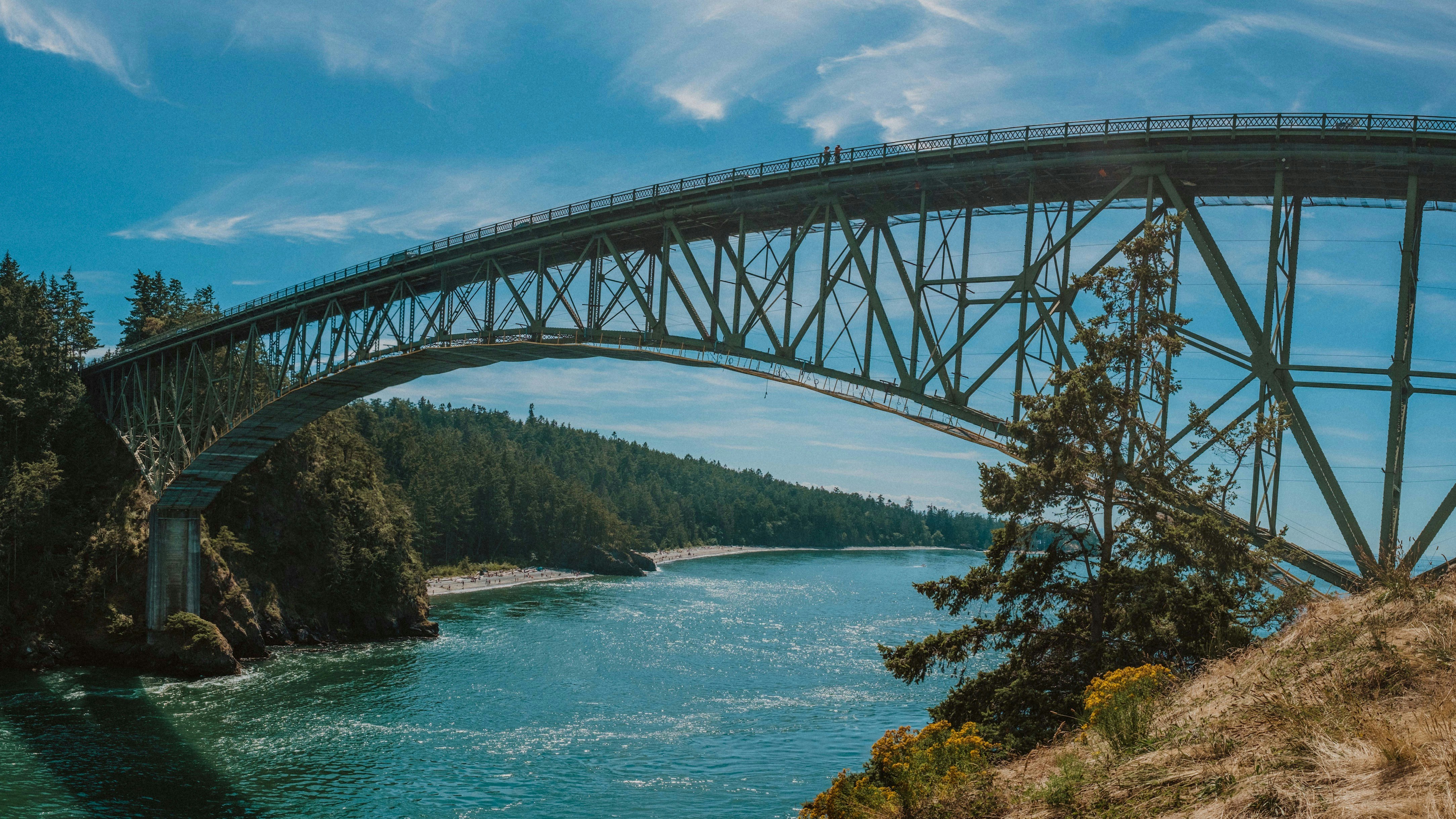
Bridge over Deception Pass
Earlier this year, Washington, the state of California, and the Canadian province of Québec issued a joint statement declaring their intent to explore the formation of a shared carbon market — also known as “linkage.” Though a linkage decision isn’t final, we’re on a promising path.
The Legislature designed Washington’s Cap-and-Invest Program with linkage in mind, recognizing that a larger shared market could reduce costs and help build an international effort to reduce greenhouse gas emissions. California and Québec currently operate a shared carbon market roughly six times the size of Washington’s standalone market. If we link, allowances issued by California and Québec could be used by Washington businesses to cover their emissions and vice versa.
The soonest we can reasonably expect to have a linkage agreement is late 2025. It could happen later than that, but we’re doing everything necessary on our end to lay the groundwork.
Rulemaking underway
To operate a joint carbon market, each jurisdiction needs to have the same rules for buying and trading allowances, so we’ll need to adjust our program to align with our potential partners. During the 2024 legislative session, lawmakers passed Senate Bill (SB) 6058 to make the necessary adjustments to our Cap-and-Invest Program for linkage with California and Québec, such as aligning allowance purchase limits for auctions across jurisdictions and having the same compliance period dates.
We’re implementing this bill through rulemaking that considers changes to the Climate Commitment Act Program Rule and the Reporting of Emissions of Greenhouse Gases Rule. We’re also kicking off Environmental Justice Assessments to understand how the potential linkage of carbon markets could impact Tribal communities, communities of color, low-income communities, and other communities who face multiple, combined environmental harms or health impacts.
We began the development phase of the linkage rule process in April after the announcement notice. We also recently shared a first draft of the rule language under consideration. This version is far from the finish line, and there will be plenty of opportunities for input throughout the rulemaking process.
What happens next
We’re now preparing for the first set of online public meetings this summer, where community members and interested parties will have an opportunity to shape linkage rule language. During these meetings, we plan to share an overview of the suggested rule changes included in the initial draft, answer questions, and listen to comments. The feedback gathered at these meetings will then be used to revise the draft language, with additional chances to contribute expected throughout 2024.
Once the development phase is complete, we’ll kick off the rule proposal phase and the public comment period on the proposed rule language. This is expected to take place next year, and once again, there will be multiple opportunities for public input. This timeline could shift as California and Québec consider changes to their programs that we’ll need to take into consideration. Because of this, we continue to work closely with California and Québec officials to ensure a smooth path toward a potentially linked program.
Before a final decision is made, we’ll need to further assess the potential impacts of linkage on our carbon market as well. Our preliminary analysis found that linking would support global efforts to reduce greenhouse gas emissions and lead to lower and more consistent prices compared to a standalone Washington market. A more stable marketplace would give businesses more certainty, making it easier for them to invest in decarbonization. And this would ultimately drive down costs as more investment is funneled into emissions-reducing technologies and businesses require fewer allowances.
It’s also worth noting that California and Québec will need to take steps under their own processes to recognize and accept Washington allowances for compliance with their programs before a linkage agreement could take effect.
How to get involved
While we still have a lot of work ahead of us, the collaboration we’ve seen so far sends a powerful message that we can create a scalable, market-based program that provides certainty for businesses and cleaner air for Washingtonians. We’ll continue to publish updates on our progress and look forward to further discussions with California and Québec.
For additional information on our linkage rulemaking process, including public meeting dates and how to submit written comments, visit our Linkage Rulemaking page. You can also sign up for Climate Commitment Act email alerts to receive notifications about upcoming meetings and online comment opportunities related to the linkage rulemaking.
For general information on the rulemaking process, please check out our rulemaking FAQ.

